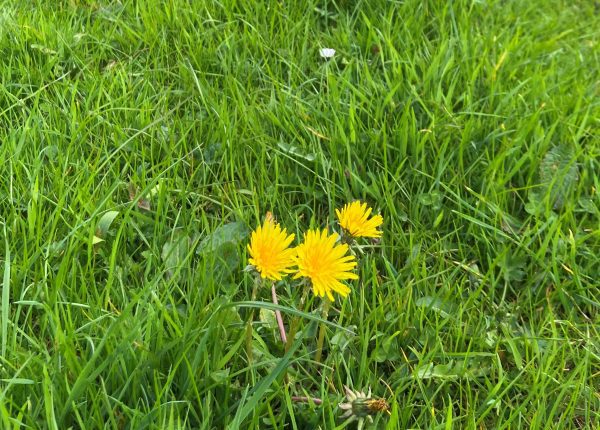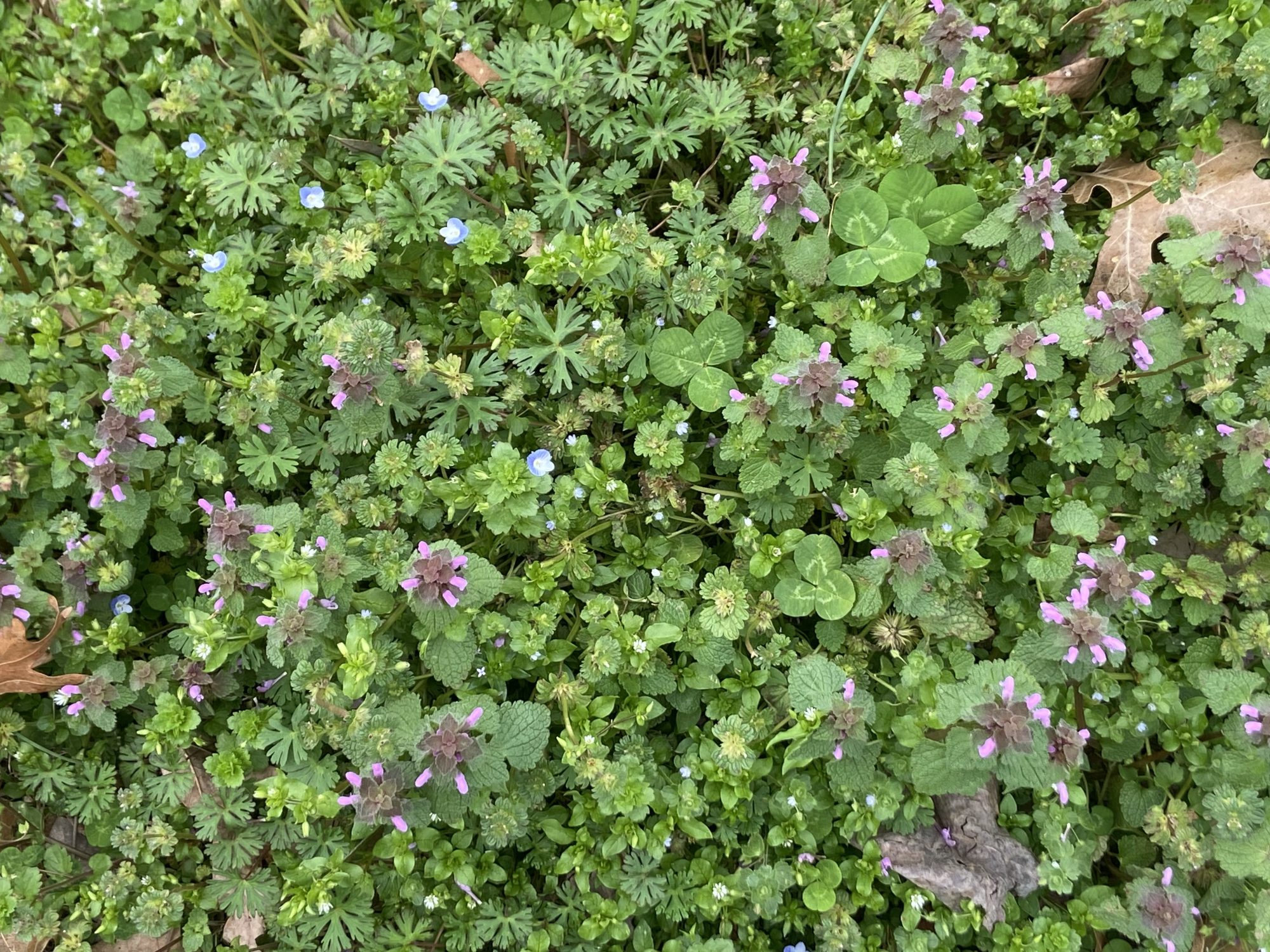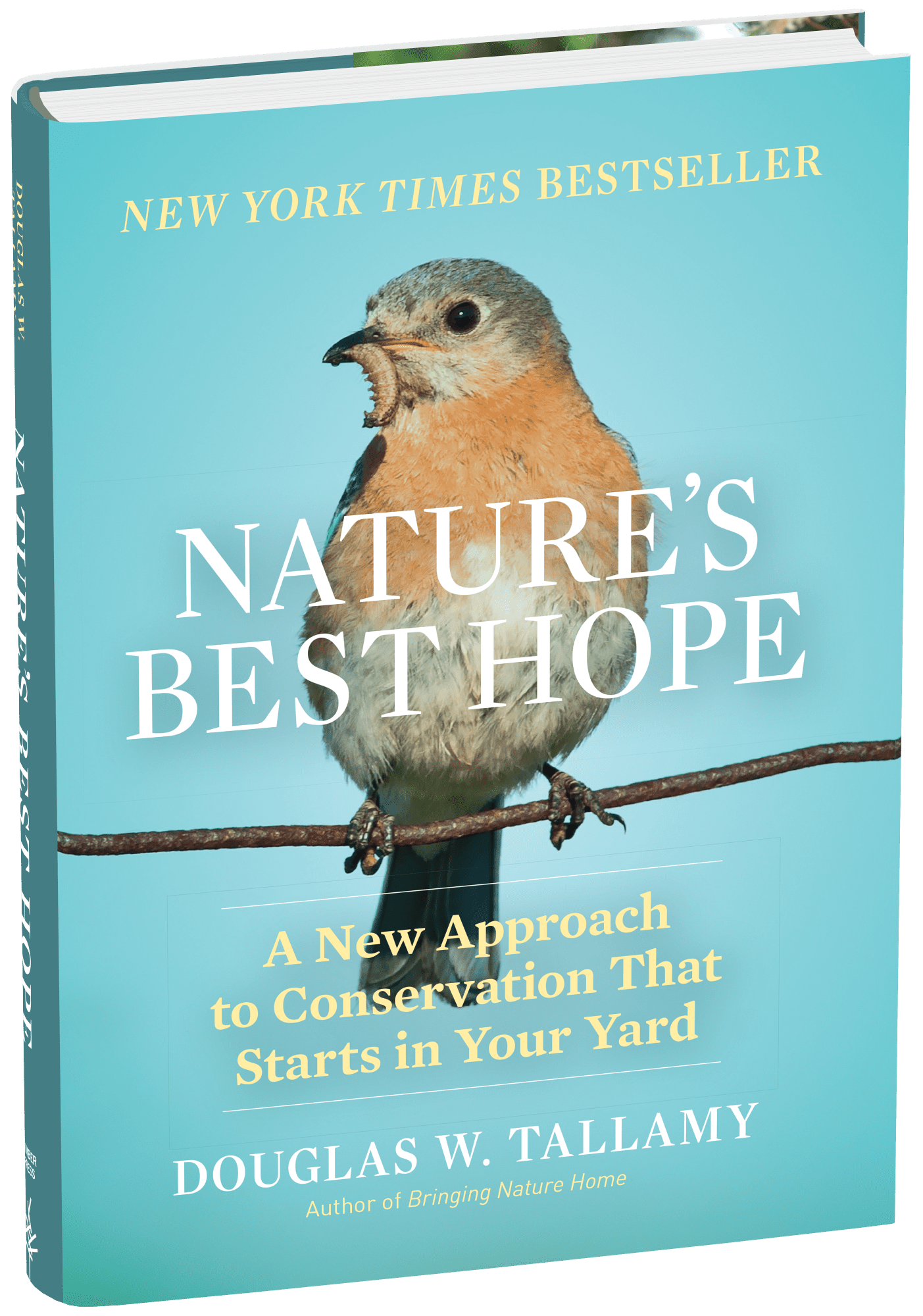‘No Mow May’ Is Catchy But Is It a Good Thing?

At first glance, ‘No Mow May’ seems like a winning idea to encourage people to delay their first mowing of the season so early spring flowers in the lawn will be available for pollinators. While I appreciate any approach to helping wildlife that requires less work and challenges the expection for a pristine stand of grass, I’ve always been somewhat wary of the campaign known as ‘No Mow May.’
The idea began in Wales in 2019 and has spread throughout the United Kingdom (Join Plantlife’s No Mow May Movement). On this side of the pond, it also seems to be gaining traction in the Northeast and Upper Midwest. And although the rhyme and alliteration are catchy, the timing is off for those of us in the Southeast.
Here in the Piedmont, where we start mowing fescue lawns in March, it might be met with bewilderment and suspicion. To resonate in our region, the concept would need some major rebranding. I’d suggest a tie-in with college basketball, because really, who wants to do yard work during tournament time? Even then, I’d still have qualms with a No Mow March. My concerns with this approach run deep.
I chafe at how it centers the lawn as a solution to the precipitous decline of bees and other insects. No Mow May implies that once June arrives it’s fine to return to business as usual. Go back to dousing the lawn with herbicides, pesticides and fungicides. Go back to profligate watering, keeping fescue on life support through our hot, dry summers. Go back to weekly mowing and blowing. I see No Mow May as greenwashing the lawn, a landscape that entomologist Doug Tallamy considers “an ecological wasteland.”
No Mow May promotes the misguided notion that a beautiful, useful meadow will spring forth if we simply get out of the way. That might be possible in remote areas of the Uwharries where native species are still available in the seedbank, but in the typical Charlotte lawn, the result would likely be an array of invasive, non-native species. In our post-wild world, we now need to manage the damage we’ve done to achieve anything approximating a “natural” landscape.

Margaret Roach addressed this conundrum in a recent column for the New York Times. “In a conventional turf-grass lawn in the suburbs, this practice that I call “unmowing” probably wouldn’t work. A meadow-style design — or one inspired by other grassland communities like prairie or savanna — would have to be intentionally planted,” she wrote.
Along those lines, No Mow May sends the message that to help wildlife, a yard must look unkempt. That’s a bridge too far for many people, and for many homeowners associations. To address this resistance, which can pit neighbor against neighbor, the concept has been tweaked to encourage people to raise their lawnmower blades to the highest setting, so the grass is cut to a uniform height while allowing those rowdy flowers to cower on the ground.
I question whether it’s worth all the contortions and acrimony just to spare some weeds that aren’t even native to North America. Winter weeds like henbit, speedwell, chickweed and dandelion are native to the United Kingdom, where this movement took root, so they’re suited to honeybees and other species native to Eurasia. But our native bees co-evolved with different plants, so these exotics will have limited benefit here. In fact, studies have suggested dandelions can actually be detrimental because their pollen is so low in protein (The Surprising Downside of #NoMowMay | Rewilding Magazine).
 To help bees and other pollinators, I’d rather see a message that encourages people to scale back the size of the lawn – a little, or a lot – and replace it with an attractive assortment of native plants. Beef up borders with flowering trees and shrubs. Replace those seasonal annuals with ornamental grasses and perennials. In the long run, they’ll be cheaper and require less maintenance and they’ll be more effective in attracting and supporting our imperiled pollinators.
To help bees and other pollinators, I’d rather see a message that encourages people to scale back the size of the lawn – a little, or a lot – and replace it with an attractive assortment of native plants. Beef up borders with flowering trees and shrubs. Replace those seasonal annuals with ornamental grasses and perennials. In the long run, they’ll be cheaper and require less maintenance and they’ll be more effective in attracting and supporting our imperiled pollinators.
Instead of promoting exotic weeds, I’d rather celebrate the beauty and abundance of our native plants. “The good news is that we can fix our ecological problems by indulging rather than sacrificing,” Tallamy wrote in Nature’s Best Hope: A New Approach to Conservation that Starts in Your Yard. Even Tallamy sees a role for grass in the home landscape. He suggests using wide swaths as paths around beds of native plants.
Our obsession with the lawn is connected to our Anglophilia. We imported this ideal vision to a climate that isn’t nearly as hospitable to expansive, manicured lawns. My sense is that No Mow May is also more sustainable in its place of origin. Here, at best, “it encourages landowners to consider how their actions might impact the local insect population,” said Gabriela Garrison, Eastern Piedmont habitat conservation coordinator with the NC Wildlife Resources Commission. “But it gives the wrong impression about what is actually beneficial and necessary.”
Garrison urges homeowners and landowners to take advantage of free technical advice about including native plants in the landscape from state and local agencies and nonprofits.